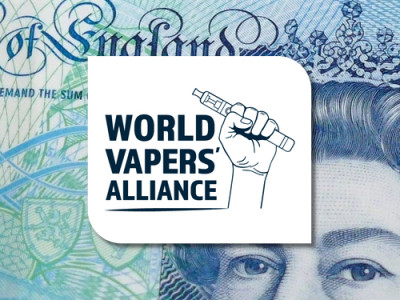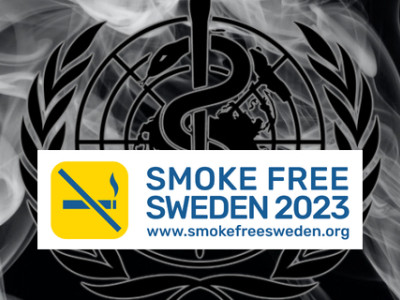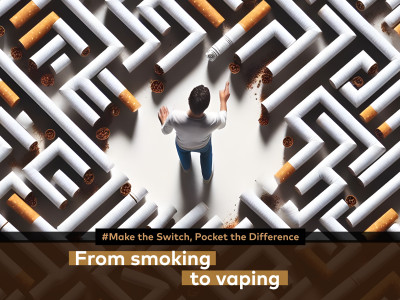The poster presentation on “Nicotine and Carcinogen Exposure by Tobacco Product Type and Dual-Use”, gave attendees at the 96th General Session of the International Association for Dental Research the impression that vaping leads to oral cancer.
Chaffee and Benowitz warned, “the tobacco landscape is evolving with increasing use of non-cigarette tobacco products and dual-use of multiple product types.” It’s a view of vaping being a tobacco product that has been strongly criticised and banned by the Nicotine and Tobacco Research journal.
The pair used the data obtained from the Population Assessment of Tobacco and Health, which includes a sample of North American adults who provided urine specimens for analysis of tobacco-specific nitrosamines.
For their purpose, electronic cigarettes were included alongside cigarettes, cigars, water pipe, pipes, blunts (marijuana-containing cigars), moist snuff, chewing tobacco and snus. They stated that “most e-cigarette users” still smoke as well.
Although not having put their research up for peer review, the duo claimed: “The analysis shows that the vast majority of non-cigarette tobacco users are exposed to carcinogen levels comparable to or exceeding exposure among exclusive cigarette smokers, levels that are likely to place users at substantial risk.”
It provoked a swift response.
Dr Richard Holliday, NIHR Doctoral Research Fellow, Centre for Oral Health Research, Newcastle University, said: “The findings describe that e-cigarette users had considerably lower levels of the two carcinogens assessed, compared to current tobacco users (any type). This is in keeping with much of the current guidance that e-cigarettes are considerably less harmful than tobacco smoking.
“The findings also describe that e-cigarette users who continuing to smoke tobacco (i.e. dual users), had similar levels of carcinogen exposure to tobacco smokers who did not use e-cigarettes.
“The abstract conclusion uses the terminology ‘non-cigarette tobacco users’ which includes both smokeless tobacco users (who showed the highest carcinogen exposure) and e-cigarette users (who showed the lowest carcinogen exposure) and it would have been more appropriate to differentiate these in the conclusion.
“Although carcinogens could be detected in the urine of smokers, the statement (in the title of the press release) that e-cigarette use is linked to oral cancer is not supported by the data presented in this poster abstract.”
Professor Paul Aveyard, Behavioural Medicine at the University of Oxford, added: “The study showed that people who used tobacco, whether or oral or smoked tobacco, had high levels of carcinogens, while people who used e-cigarettes without tobacco had very low levels, so this is very reassuring news for people who vape. However, people who smoked as well as vaped had similar levels of carcinogens to people who just smoked.
“Without access to the peer review paper, it is difficult to put this result in context. People were classed as a vaper if they had used an e-cigarette once in the past 30 days and this level of vaping, merely trying an e-cigarette, is unlikely to reduce exposure to tobacco carcinogens. It could be that using an e-cigarette reduces exposure to carcinogens because the nicotine in the e-cigarette partly suppresses the need to smoke.
“If heavier smokers were more likely to try vaping, which seems likely, then this could explain this pattern. We have seen this kind of result in other research, which showed that people who switched from smoking to smoking and vaping reduced their exposure to carcinogen. When this paper is published properly, we will be able to evaluate it properly. However, for now we can conclude that stopping smoking and carrying on vaping leads to substantial reductions in exposure to cancer causing chemicals.”
Professor Peter Hajek, the Director of the Tobacco Dependence Research Unit at Queen Mary University, explained: “The headline directly contradicts the actual study findings. The study did not find levels of carcinogens in vapers that would indicate cancer risk. The headline should have been ‘Tobacco products BUT NOT E-CIGARETTES linked to cancer risk’.”
Dr Ed Stephens, Senior Research Fellow, University of St Andrews, agrees with Hajek: “It is misleading to entitle the press release ‘E-cigarettes and tobacco product use linked to increased risk of oral cancer’, it should at least be qualified ‘Combined e-cigarettes and tobacco product use’.
“In brief, the failure to headline the story with “combined” or “dual” use of e-cigs with tobacco could misrepresent the authors’ findings and imply that vaping alone carries a risk of oral cancer comparable to smoking. The data do not support that conclusion, rather they show quite clearly that vapers who do not smoke have a very much lower risk of oral cancer from TSNAs than those who combine vaping with smoking.”
Dave Cross
Journalist at POTVDave is a freelance writer; with articles on music, motorbikes, football, pop-science, vaping and tobacco harm reduction in Sounds, Melody Maker, UBG, AWoL, Bike, When Saturday Comes, Vape News Magazine, and syndicated across the Johnston Press group. He was published in an anthology of “Greatest Football Writing”, but still believes this was a mistake. Dave contributes sketches to comedy shows and used to co-host a radio sketch show. He’s worked with numerous vape companies to develop content for their websites.
Join the discussion
Harm Reduction For The Rich
The United Kingdom risks becoming a harm reduction country only for the wealthy, according to Michael Landl of the World Vapers’ Alliance
CAPHRA Highlights Tobacco Control Flaws
The Coalition of Asia Pacific Tobacco Harm Reduction Advocates highlights the flaws in tobacco control which has led to the rise of black market in Australia
A Missed Opportunity at COP10
The Smoke Free Sweden movement says that COP10 was a missed opportunity to save millions of lives
COP10: Promote Tobacco Harm Reduction
Experts with Smoke Free Sweden are emphasising the urgent need for a Tobacco Harm Reduction approach at COP10












